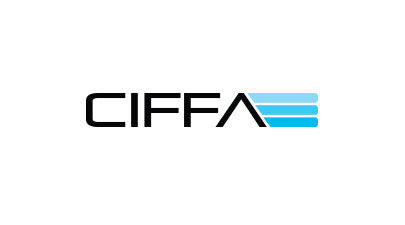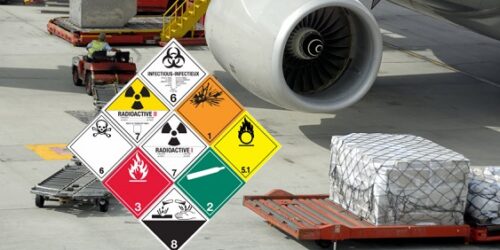CIFFA Exam Sample Practice Questions and Answers – Understanding Freight Forwarding

CIFFA Exam Sample Practice Questions and Answers – Understanding Freight Forwarding
Questions
1. What activities might CIFFA undertake to achieve its mission in each of its three foundation elements?
2. CIFFA has three categories of membership. Give an example of who/what type of company might belong to each category. In what category is your company?
3. FIATA is the acronym for the French name of the parent organization of national freight forwarding associations (Federation Internationale des Associations de Transitaires et Assimiles). List 4 of the many areas in which FIATA Technical Committees are active.
4. CIFFA’s Standard Trading Conditions (STCs) govern the relationship between the freight forwarding company and its customer. In order for the Standard Trading Conditions to be valid in court, the customer must be fully aware of the STCs. List at least 3 ways the CIFFA Member might communicate the STCs to its customers. Explain the legal complications if your customer is not aware of the CIFFA STCs.
5. Freight forwarder is the party who ensures that internationally traded goods, and the data related to those goods, move from point of origin to point of destination to arrive:
• At the ______________________
• At the ______________________
• In _________________________ and
• At _________________________
6. What kinds of regulations must an “architect of transportation” consider in order to design the solution that best meets the customer’s needs?
7. Explain:
a) How CREEEPSS works between Canada and the United States.
8. List some of the major parties involved in the movement of goods, documents, and money in international trade.
9. Why do governments, such as the Government of Canada, provide support to exporters?
10. What are the 3 general processes in an international trade transaction?
11. In what city and what year was CIFFA founded?
12. What is the acronym for the French name of the parent organization of national freight forwarding associations, of which CIFFA is a member?
13. FIATA issues standardized transportation documentation for its Members. Complete the name of each of these documents:
FCR: ___________________
FCT: ____________________
FBL: ____________________
FWR: ____________________
SDT: ____________________
FWB: _____________________
14. Fill in the blanks of the Code of Ethics of Regular Members.
• The CIFFA Regular Member must discharge his duties with and _______;
• The CIFFA Regular Member pledges a _ _ to his client, to perform, in a ______, and __ manner, services undertaken on the client’s behalf;
• The Regular Member pledges to hold in _ _ all information acquired in the course of the relationship concerning the business and the affairs of his client. No such information is to be divulged unless authorized by the client, or required by law;
• The CIFFA Regular Member agrees to observe all relevant _ _ ___ regarding the movement of goods entrusted to him; and
• The CIFFA Regular Member owes a duty to his client, not to _____ _ _______, except for good cause, and upon appropriate notice.
15. What two things must today’s freight forwarding company invest in?
16. What are some of the names/titles given to “architects of transportation solutions?”
17. In order to facilitate movement of goods around the world, the freight forwarder must understand the need for regulatory compliance. What are some of the things that are governed by regulations and legislation?
18. What are some of the risks which are particularly associated with the movement of goods?
19. Why does a freight forwarding company require a network with solid representation at destination?
20. Why does a freight forwarding company require a network with solid representation at origin?
21. What are some of the “controllable aspects” of a new market that the exporter may have control over?
22. What are some of the standards and requirements a Canadian importer must consider to ensure goods are suitable for the domestic market?
23. What three governments will have an interest in an international transaction?
24. When buyers and sellers negotiate an international contract, what two very important terms must be considered?
Answers
1. What activities might CIFFA undertake to achieve its mission in each of its three foundation elements?
Membership: Networking, events, e.g., golf tournaments, gala dinners – level playing field with Standard Trading Conditions, Code of Ethics.
Education: Dangerous Goods training (air, road and ocean), Cargo Security training, Certificate Programs leading to a Certificate or an Advanced Certificate, international trade workshops on specialized topics.
Advocacy: Leadership with government and non-government organizations, i.e., Canada Border Services Agency, Transport Canada, IATA, FIATA.
2. CIFFA has three categories of Membership. Give an example of who/what type of company might belong to each category.
Regular Member: Canadian freight forwarding company.
Associate Member: Trucking company, e-commerce company, warehouse, drayage company.
Personal Member: Professional Freight Forwarder (PFF).
3. FIATA is the acronym for the French name of the parent organization of national freight forwarding associations (Federation Internationale des Associations de Transitaires et Assimiles). List 4 of the many areas in which FIATA Technical Committees are active.
Public relations, vocational training, rail transport, road transport, seaborne and combined transport, Airfreight Institute, customs.
4. CIFFA’s Standard Trading Conditions (STCs) govern the relationship between the freight forwarding company and its customer. In order for the Standard Trading Conditions to be valid in court, the customer must be fully aware of the STCs. List at least 3 ways the CIFFA Member might communicate the STCs to its customers.
Explain the legal complications if your customer is not aware of the CIFFA STCs.
Add reference to STCs in e-mail signature; include reference in quotations and invoices, i.e.: “All business is conducted subject to the CIFFA Standard Trading Conditions”; provide an e-mail with the link to the CIFFA STCs at www.ciffa.com; give a printed copy of the STCs to every new account; have new accounts sign for the STCs when they sign an account opening or credit application; the customer will not know what their responsibilities are and can be held liable for:
Improper loading/packaging; improper transporting; limitations of liability, etc. (Refer to the STCs in the Appendix of the CIFFA ITT textbook for a full description of the customer’s responsibilities).
5. The freight forwarder is the party who ensures that internationally traded goods, and the data related to those goods, move from point of origin to point of destination to arrive:
• At the right place
• At the right time
• In good order and condition
• At the most economic cost.
6. What kinds of regulations must an “architect of transportation” consider in order to design the solution that best meets the customer’s needs?
• International maritime law
• Cargo insurance
• Customs environments
• Cargo security legislation, and
• Understanding of international trade.
7. Explain:
a) How CREEEPSS works between Canada and the United States.
Culture, religion, education, economy, environment, politics, social characteristics and special characteristics between Canada and the U.S.A. are the same making trade between the 2 nations easier.
As opposed to, for example, CREEEPSS between Canada and North Korea which is on the Area Control List.
8. List some of the major parties involved in the movement of goods, documents, and money in international trade.
• The exporter
• The importer
• The freight forwarder
• The carrier
• The bank(s)
• The government(s), and
• The customs broker.
9. Why do governments, such as the Government of Canada, provide support to exporters?
• Exports create jobs
• Exports bring wealth into a country, and
• Exports help with the balance of payments.
10. What are the 3 general processes in an international trade transaction?
• Buyer and seller: Negotiating the sales contract
• Forwarder and carrier: Moving the goods and information, and
• Forwarder and customs broker: Customs clearance and delivery.
11. In what city and what year was CIFFA founded?
The Association was founded in Montreal in September, 1948.
12. What is the acronym for the French name of the parent organization of national freight forwarding associations, of which CIFFA is a member?
FIATA
13. FIATA issues standardized transportation documentation for its Members. Complete the name of each of these documents:
FCR: Forwarders Certificate of Receipt
FCT: Forwarders Certificate of Transport
FBL: Multimodal Transport Bill of Lading
FWR: FIATA Warehouse Receipt
SDT: Shippers Declaration for the Transport of Dangerous Goods
FWB: Non-Negotiable FIATA Multimodal Transport Waybill.
14. Fill in the blanks of the Code of Ethics of Regular Members.
• The CIFFA Regular Member must discharge his duties with honesty and integrity;
• The CIFFA Regular Member pledges a standard of competence to his client, to perform, in a conscientious, diligent and efficient manner, services undertaken on the client’s behalf;
• The Regular Member pledges to hold in strict confidence, all information acquired in the course of the relationship concerning the business and the affairs of his client. No such information is to be divulged unless authorized by the client, or required by law;
• The CIFFA Regular Member agrees to observe all relevant laws of Canada regarding the movement of goods entrusted to him; and
• The CIFFA Regular Member owes a duty to his client, not to withdraw his services, except for good cause, and upon appropriate notice.
15. What two things must today’s freight forwarding company invest in?
• Knowledgeable employees, and
• Information systems.
16. What are some of the names/titles given to “architects of transportation solutions?”
• Global logistics provider
• International freight forwarder
• Third party service provider
• Transportation intermediary.
17. In order to facilitate movement of goods around the world, the freight forwarder must understand the need for regulatory compliance. What are some of the things that are governed by regulations and legislation?
• Cargo security
• Advance commercial information
• Export declarations
• Import customs clearance.
18. What are some of the risks which are particularly associated with the movement of goods?
Loss, damage and delay.
19. Why does a freight forwarding company require a network with solid representation at destination?
• For unloading and deconsolidation of ocean export consolidations
• For receiving payment on “charges collect”
• For arranging local delivery and offer inbound consolidation.
20. Why does a freight forwarding company require a network with solid representation at origin?
• To arrange and pay for pick-up overseas
• To make sales
• To offer inbound ocean consolidation service.
21. What are some of the “controllable aspects” of a new market that the exporter may have control over?
• The selling price
• The product development
• The distribution (place)
• The promotion.
22. What are some of the standards and requirements a Canadian importer must consider to ensure goods are suitable for the domestic market?
• Packaging
• Electrical goods must be CSA or UL
• Marks and labels such as country of origin.
23. What three governments will have an interest in an international transaction?
Government of the origin country, transit country and destination country.
24. When buyers and sellers negotiate an international contract, what two very important terms must be considered?
Terms of payment: how and when the buyer pays the seller
Terms of delivery (INCOTERMS): the risk, responsibility, and cost for shipping the good.





